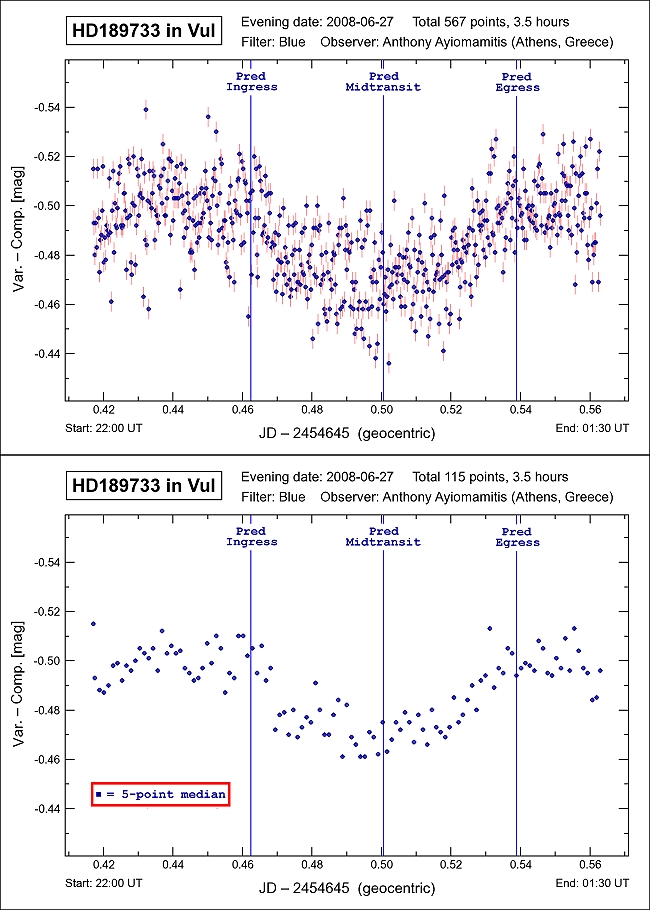
A variable star, as its name suggests, is a star whose magnitude varies intrinsically, in contrast to eclipsing binaries whose magnitude
varies as a result of one star in the binary system eclipsing the other. True variables are one of five types, namely Mira stars, semiregular
stars, cepheids, eruptive variables and, finally, cataclysmic variables. Minimum to maximum magnitude can range from days to many months with
some variables displaying irregular periods.
A popular method for the study of variable stars, particularly short-term variables, is by the use of the technique known as "differential
photometry". Rather than measure the (variable) magnitude of a variable star on an absolute scale, measurements are made over time relative
to one or more non-variable star(s) and these differences are then plotted so as to study and illustrate the relative or differential change
in magnitude. Due to the very large number of variables stars, the field of differential photometry represents one of the key fields in
astronomy whereby the amateur astronomer can make a meaningful and long-lasting contribution to both science and astronomy.
More recently, the search for extrasolar planets (over 275 discovered so far) has identified yet another interesting application for the
practice of differential photometry whereby the minute drops in magnitude of a star hosting an exoplanet are studied. Further details for the
interested party are available here.
Note: The discovery of the exoplanet around HD189733 in the constellation of Vulpecula by the Geneva Extrasolar
Planet Search Programme in 2005 is perhaps the most exciting discovery to-date, for the parent star is very bright and easily within reach of
amateur telescopes (see here). Exoplanet HD189733b is
characterized with a mass and radius slightly greater than that of Jupiter (15% and 26% respectively) and a brief orbital period of only 53
hours. HD189733b requires 109.6 minutes to transit its parent star at a depth of 2.80%. The parent star, HD189733, is estimated to have a mass
of 0.82 solar masses, a radius equivalent to 0.76 solar radii and a temperature of 5,050° K. For complete details as reported by the discovery
team led by Francois Bouchy (Marseille Astrophysics Laboratory, France), click here.
Note: The C- and K-stars used for the purposes of the differential photometry measurements depicted below were SAO
88067 (mag 8.09) and SAO 88041 (mag 8.94), respectively.
|
Parent Star: HD 189733 GSC Catalog: GSC 2141:972 Constellation: Vulpecula RA / Dec: 20h 01m 01.5s / +22° 43' 32" Magnitude: 7.67 Distance: 63 light-years Exoplanet: HD 189733b Period: 2.2190 + 0.0005 d Transit Duration: 109.6 minutes Transit Depth: 28.0 mmag Minimum Mass: 1.154 MJup Radius: 1.07 RJup Pred Transit Details:
|
 |
Date: June 27-28, 2008 01:00:30 - 04:30:46 UT+3 Location: Athens, Greece Equipment: AP 160 f/7.5 Starfire EDF AP 1200GTO GEM SBIG ST-2000XM SBIG CFW-10 SBIG LRGB + IR-block Integrations:
Temperatures:
Software: CCDSoft V5.00.188 AIP4Win V2.2 Processing: Reduction Differential Photometry |